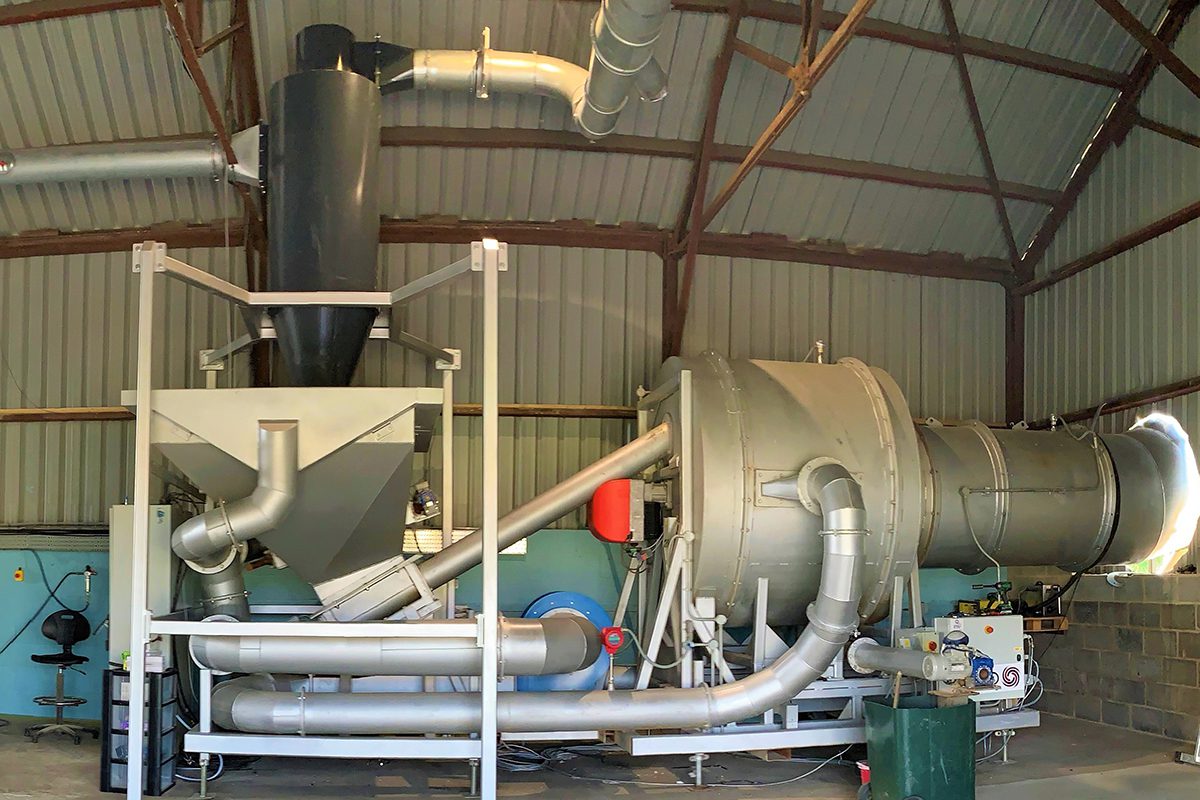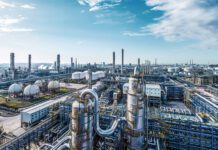
A new waste incinerator is claimed to be “turning heads” in the recycling and waste processing world because of its ability to process previously unrecyclable materials and its efficiency in using the exhaust heat generated by a vortex to produce electricity, district heating and food production.
A collaboration between Siemens Digital Industries and waste incinerator maker Xetrov Group, the Clean6 Vortex “will have a very high 98% conversion rate with only 2% residue, against the 80-90% efficiency rate of incinerators used in the industry,” says a press release.
Importantly the incinerator can recycle material that was deemed unrecyclable.
The firms say the outstanding feature of the incinerator that sets it apart from competitors is that the gasification or pyrolysis technologies used in the Clean6 Vortex volatilises material at temperatures significantly higher (1,400 – 1,700°C vs. 850-1,100°C) than those found in standard incineration plants. This results in an increased efficiency, lower emissions and very low residue outputs.
Siemens will supply the end-to-end solutions for producing the incinerators, including the G120 Inverter, the S7-1500 controller, the ET200 I/O for control cabinets, process instrumentation (flow and level sensors), control products, power supplies, HMI, IOT box, Scalence managed switches and some more products that are still under discussion. This integrated approach provides diagnostic benefits, such as secure remote access and opens the door for IOT connection.
Siemens’ products will be used in all four components of the Clean6 Vortex machine, including the incinerator, crusher, boiler and potentially steam turbine.
Xetrov, headquartered in Yorkshire, has built and operates a waste-to-energy plant in Pollington in the county.
Xetrov has created a bespoke modular solution suitable for the UK to the roll-out of decentralised waste-to-energy plants.
Each module consists of three core Clean6 Vortex advanced thermal treatment units and has a maximum waste processing capacity of 3 tonnes per hour (24,000 tonnes per annum).
“Siemens is delighted to have been selected by Xetrov for supplying end-to-end solutions for the ground-breaking incinerator, Clean6 Vortex,” said Brian Holliday, Managing Director, Siemens Digital Industries UK.
“The benefits of this conversion technology to the community and its potential contribution to the UK’s net zero emissions targets are going to be huge. This technology is in sync with Siemens’ own goals of achieving a net zero carbon footprint by 2030 across all our production facilities and buildings globally. We are fully geared and equipped to meet the specific requirements of Xetrov as it continues its mission of revolutionising waste processing and recycling.”
“We have been scouting for a partner that understands and shares our goals,” said Ashleigh Ruxton, Founder & CEO of Xetrov. “Siemens brought to the table a slew of products that will go a long way in making our solution stronger and smarter. Our advanced thermal conversion technology (Clean6 Vortex or Vortex) is not only 98% efficient on waste destruction but also requires less than half the waste compared to competing technologies to produce power. In all this, the role of the technology supplier is very critical. The digital technologies used are the future of machine development, deployment and are important for remote secure connectivity for future proofing our innovative product.
“We have a strong environmental and social remit and want to contribute to the UK’s zero-landfill target and a reduction of CO2,” Ruxton added.
Xetrov Group presents its mission as embracing the circular economy, carbon reduction, low-to-no emissions, decentralised power generation, and zero landfill. The Clean6 Vortex will have a very high 98% conversion rate with only 2% residue, against the 80-90% efficiency rate of incinerators used in the industry.
The Clean6 Vortex has exhaust emissions, which are said to be significantly lower than required by the Industrial Emissions Directive (IED). In addition, the technology does not produce any fly ash, as other incinerators normally do. Inert residues are typically 2% and are certainly below many of the alternative technologies.
The firms believe the product is in sync with the UK Government’s target of having no more than 10% of waste going to landfill by 2035 against the current rate of 24%.






